All The Following Were Strengths Of The Union Except

The American Civil War, a brutal conflict that tested the very fabric of the nation, was ultimately won by the Union. A common question posed when analyzing the Union's victory is: "All the following were strengths of the Union EXCEPT…?" Understanding the nuances of the Union's advantages, and identifying what *wasn't* a strength, is crucial to grasping the complexities of this pivotal period in American history.
This article will delve into the widely accepted strengths of the Union – its industrial capacity, larger population, established government, and superior naval power. Then, it will focus on the aspects often mistakenly attributed to the Union as strengths, but which, in reality, were either limitations or shared characteristics. This analysis aims to provide a more accurate and nuanced understanding of the factors that contributed to the Union's eventual triumph.
The Arsenal of the North: Industrial Might
One of the Union's most significant advantages was its superior industrial capacity. Northern factories churned out weapons, ammunition, uniforms, and other essential supplies at a rate far exceeding the Confederacy's capabilities. The North had a well-developed railway system, allowing for efficient transportation of troops and resources.
According to historical records, the Union possessed over 90% of the nation's manufacturing capacity. This industrial dominance proved decisive in sustaining the war effort over the long term.
Numbers Matter: Population Advantage
The Union enjoyed a significantly larger population than the Confederacy. The North had approximately 22 million people, compared to the Confederacy's 9 million, of whom nearly 4 million were enslaved. This larger pool of manpower allowed the Union to field larger armies and absorb higher casualty rates.
The sheer volume of available soldiers gave the Union a strategic advantage in a war of attrition. Emigration to the North continued during the war, further boosting the workforce and military potential.
A Government in Place: Political Stability
The Union possessed an established government with a functioning bureaucracy, financial system, and international recognition. President Abraham Lincoln's administration was able to raise funds through taxes and loans, manage the war effort, and maintain diplomatic relations with foreign powers. This stability contrasted sharply with the challenges faced by the newly formed Confederate government in establishing its legitimacy and infrastructure.
The established government allowed the Union to effectively organize its resources and coordinate its war strategy.
Controlling the Seas: Naval Superiority
The Union Navy maintained a blockade of Southern ports, choking off the Confederacy's ability to export cotton and import essential goods. This naval dominance severely hampered the Confederate economy and weakened its ability to wage war. The Union Navy also controlled key rivers, providing vital transportation routes and enabling strategic offensives.
The Union's blockade was a critical factor in the Confederacy's eventual collapse.
The Misconceptions: What Wasn't a Union Strength
While the aforementioned factors undeniably contributed to the Union's victory, some commonly cited "strengths" require closer examination. One such example is the idea that the Union had inherently better military leadership from the outset. Initially, the Union struggled with ineffective generals and a lack of clear strategic direction.
Early in the war, Confederate generals like Robert E. Lee and Stonewall Jackson consistently outmaneuvered and defeated Union forces. It wasn't until later in the war, with the rise of generals like Ulysses S. Grant and William T. Sherman, that the Union gained a decisive advantage in military leadership.
Another misconception is that the Union was united in its commitment to abolishing slavery from the start. While the abolitionist movement was a powerful force in the North, the initial war aims were primarily focused on preserving the Union, not ending slavery. The Emancipation Proclamation, issued in 1863, was a strategic decision as much as a moral one.
The Emancipation Proclamation was meant to cripple the South by weakening the base of it's workforce. Abolition sentiment grew through the war, but was not the core reason for the Union war effort at the start.
Furthermore, it would be inaccurate to suggest that the Union possessed unwavering public support throughout the war. The conflict was deeply divisive, and there was significant opposition to the war effort in the North, particularly in border states. Draft riots, like those in New York City, highlighted the deep social and economic tensions within the Union.
These anti-war protests demonstrated the fragility of the Union's home front.
Therefore, when considering the question "All the following were strengths of the Union EXCEPT…?", the answer often lies in recognizing the complexity of the situation. The *perception* of a strength doesn't always equate to *reality*. The Union's early military leadership was questionable, its initial war aims were not solely focused on abolition, and its home front was far from united.
Looking Ahead: Lessons from the Union Victory
The Union's victory in the Civil War was a result of a combination of factors, including its industrial capacity, larger population, established government, and superior naval power. However, it's crucial to acknowledge the limitations and challenges the Union faced, and to avoid simplistic narratives that overemphasize certain strengths while ignoring others. Studying the Civil War provides valuable insights into the complexities of war, the importance of leadership, and the enduring challenges of building a more perfect union.
By understanding both the strengths and weaknesses of the Union, we can gain a more nuanced and accurate understanding of this pivotal period in American history and its lasting impact on the nation.

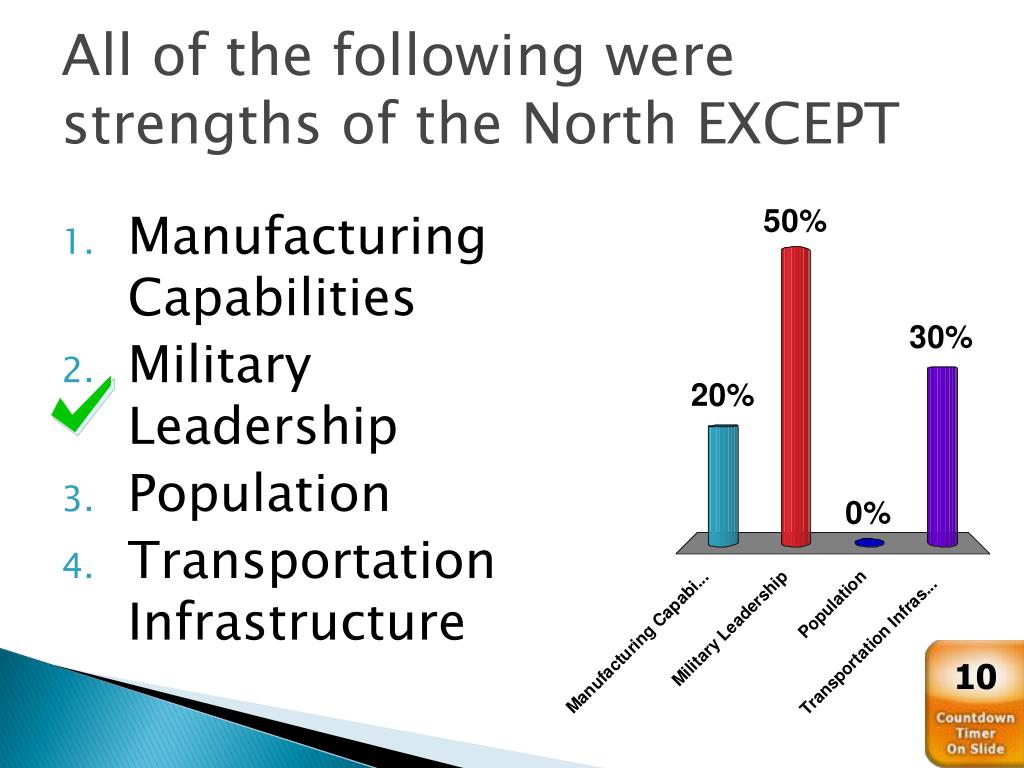
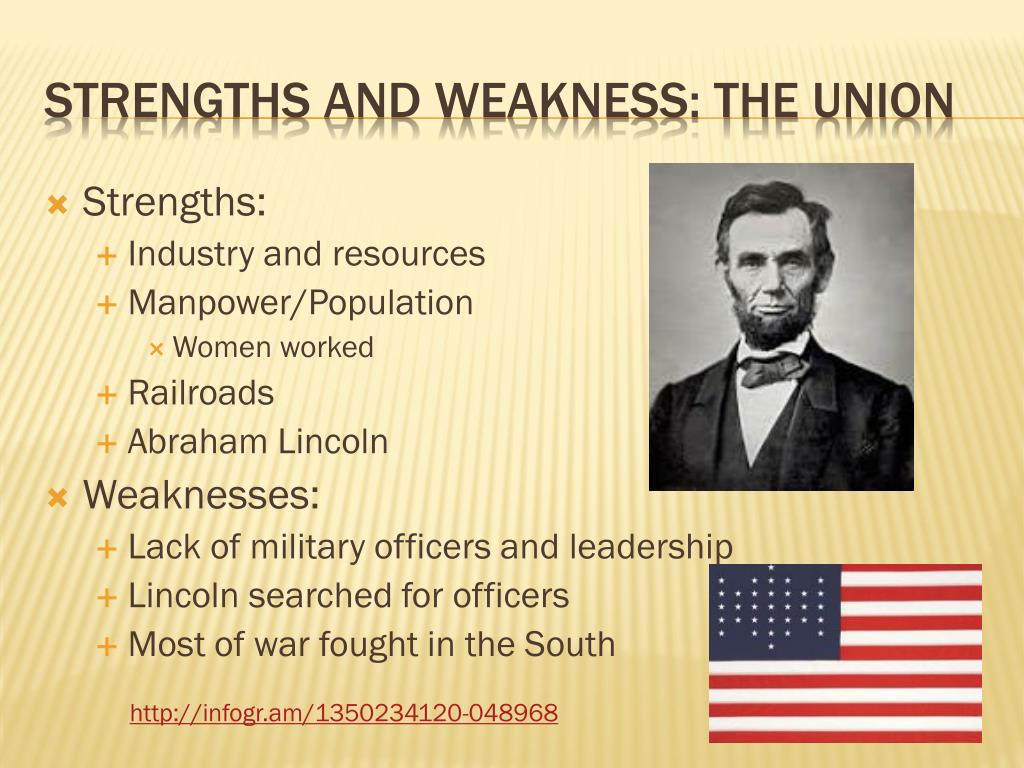


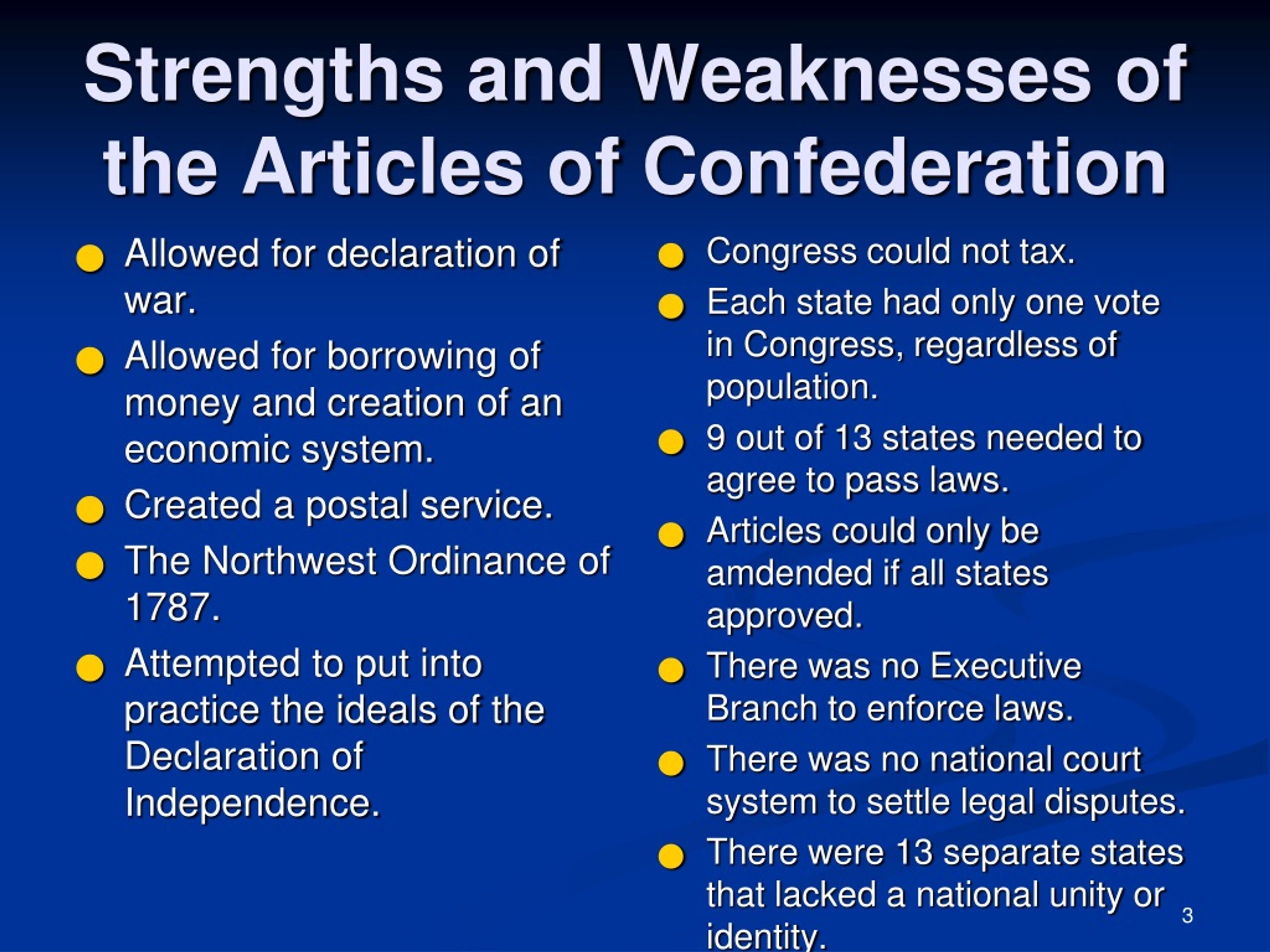
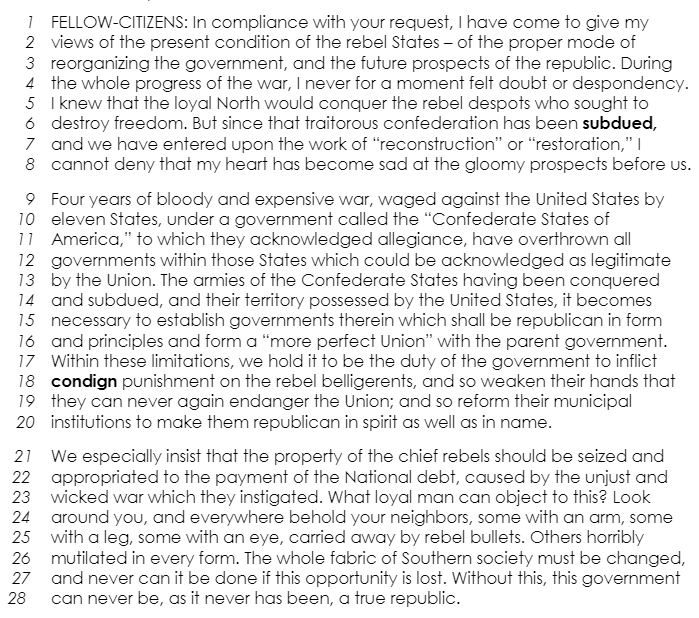


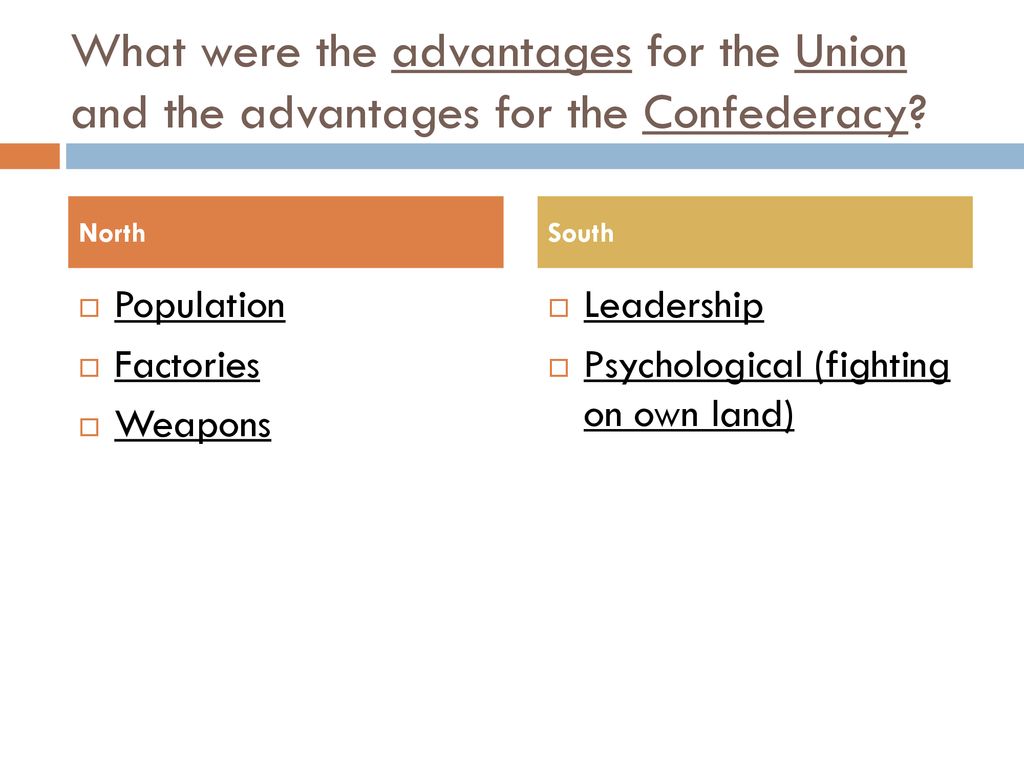




+Explain+the+Strengths+and+Weaknesses+of+the+C+and+U.jpg)



